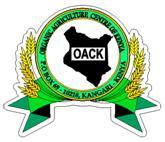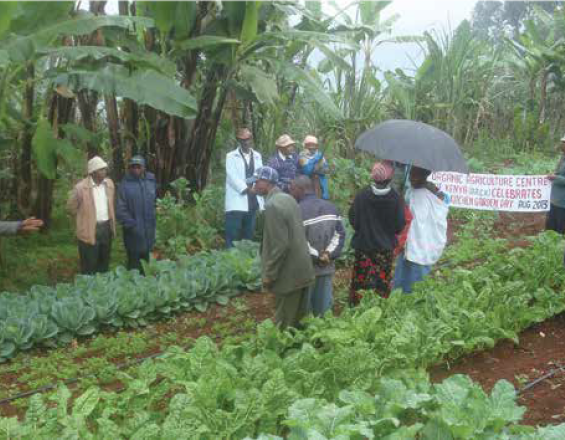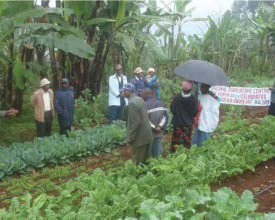
Using a weed relative to turn tree tomato resistant to drought and diseases

Solution is undertaken using scientific fruit plant propagation and conducting innovative top-wedge grafting of (tree tomato) tamarillo (Solanum betaceum) terminal bud stick scion into its poisonous wild relative bug weed rootstock tolerant to drought and resistant to soil borne diseases and pests as well as having longer roots than tamarillo and stronger ones. Both plants belong to Solanaceae plant family, hence grafting the two plants is compatible and methodology transforms bug weed (Solanum mauritianum) as required. This innovation has therefore created food, agriculture and economic opportunities by using grafting methodology to transform the poisonous bug weed into agro biodiversity resources problem globally. Innovation is expected to contribute to feeding the ever growing world population that is expected to be nine billion by 2050.
Context
Challenges addressed
How to develop resistance against tree tomato, soil bourne diseases and pests as well as drought tolerance, and increase the productivity phase life for incressed fruit yield, improved food and nutrition security as well as reduced economic risks and poverty among beneficiary communities.
The challenge in transforming wild bug weed into a new agro biodiversity resource for agriculture , food and economic purpose will be addressed. Likewise climate change will also be addressed through drought tolerance acquired through grafting tree tomato with bug weed.
Location
Process
Summary of the process
The building blocks interact as propagation of the tree tomato and Bug weedtake place. The initiative grafting tree tomato scion into bugweed root stock inspired the informed partner i.e. OFIA committee to take decision in consindering the innovation's success/winning through training undertaken by innovator (in blue dust coat ) and farmer trainee (in red shirt) using the grafted plant, in the photograph shown hereby.
Building Blocks
Grafting and Training building block
One of the approaches used used as a building block is graftiing, which is done through, scientific fruit plant propagation and conducting innovative top-wedge grafting of (tree tomato) tamarillo (Solanum betaceum) terminal bud stick scion into its poisonous wild relative bug weed rootstock tolerant to drought and resistant to soil borne diseases and pests as well as having longer roots than tamarillo and stronger.
Training of beneficiaries in vocational skill related to fruit tree production.
Enabling factors
Enabling factors include:
1. Availability of grafting materials includung scions and root stocks.
2. Appropriate grafting operator skills and techniques.
3. Propagation and labour.
4. Trainers availability.
5. Availability of beneficiaries / trainees, and innovator presence.
Lesson learned
Lessons learnt:
1. Most beneficiaries do not know the relationship between tamarillo and bug weed.
2. Bugweed has long roots compared to tamarillo. Some of the bug weed root go deeper horizons in the ground e.g 3.6 metres deep compared to tamarillo roots that go to 0.75metres in the ground.
3. Bugweed plant is ever green through out the year.
4. Bug weed is poisonous to human, animals and enviroment.
5. Tree tomato can produce over 800 fruits per year.
6. Few customers grow tree tomatos
Partinership building block
Our partinership building block includes IFOAM-organics international, German development aid, Rural Development Administration of South Korea. These two organizations organized the Organic Farming innovation Award for which I won the science prize award 2014.
Enabling factors
Enabling conditions that are important for success of this building block are:
- Facilitation of communication for interaction required for information between partners.
- Financial assistance to faciltate meeting the costs incurred in the building blocks.
- Media outscaling of innovation's building blocks news spreading to the society.
Lesson learned
- Building block partnership created a learning of the innovation for beneficiaries to grow tamarillo for food and income.
- Building block partnership's OFIA continues to hold innovation competition after every three years.
- Regional benefit resulting from innovation's building blocks.
Impacts
Grafted plants have produced healthy consumable fruits apppreciated by producers and I have forwarded the fruits to Kenya Agricultural Research and Livestock Organization (KARLO) Research Institute and University of Nairobi for testing. We are eating the fruits and small-scale farmers here are growing the grafted fruit for home consumption and enterprising which is generating higher income in comparison to other investments in the farms for the poor farmers to improve their economic growth and impacts.
Beneficiaries
The beneficiaries include small scale farmers, traders, consumers, enviroment.
Sustainable Development Goals
Story
Here Is A Man Who Has Discovered A Goldmine In Growing Tamarillo
Every young person aspires to see themselves break even and turn into millionaires one day. However, the millionaire status is one that often proves too elusive to many. Otherwise, it is possible for anyone to invest, work smart and turn their ventures into a money mill.
50 year old Julius Mwangi Kimani from Kamwario Village, Gacharage Sub-Location, Kinyona Location of Murang’a County Kenya, can only be best described as a man who knows how to take maximum advantage of available opportunities to make millions.
Having dealt with tea farming for years and observed its returns, Mr Mwangi decided to try some other crop so as to boost his income. Motivated by the success of other farmers, he went head-first into tree tomato farming, armed with very little information.
He cleared about a quarter acre piece of land and bought 500 seedlings of grafted tree tomatoes. The seedlings had been grafted with Solanum mauritianum (the bug weed).
“I spent kshs. 50,000 and to plant the 500 seedlings and in less than one year, I had already started earning from my trees. I have tried tea and dairy farming. But I have decided to concentrate more on tree tomatoes because they are cheaper to grow, mature faster than tea and their market is good. On a very bad day, a kilo of tree tomatoes goes for sh. 80,” he says.
The tree tomatoes, which he supplies to Nairobi and other markets, are currently his main money maker. The market is so great that the buyers even come to collect the fruits from his farm, thereby saving him from the stress of having to transport them to the market. In fact, Mwangi reckons that he is not able to satisfy the demand at the moment and he usually supplements his supply with produce from other farmers in the region.



